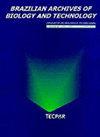A Transformerless Boost-Modified Cuk Combined Single-Switch DC-DC Converter Topology with Enhanced Voltage Gain
IF 1.1
4区 生物学
Q3 BIOLOGY
引用次数: 1
Abstract
: Recently, the research is towards the development of high static gain DC-DC converters suitable for renewable energy applications. The high voltage gain can be achieved using isolated and non-isolated configurations of the converter. The magnetically coupled inductor based isolated DC-DC converter structures can have improved voltage gain, but they need large size inductors which may lead to increased cost. Thus, the modified structures of non-isolated conventional boost, CUK, and SEPIC topologies with inclusion of additional controlled and uncontrolled switches along with large number of passive components are employed to achieve the improved voltage gain. However, it leads to increased complexity and control. Hence, the researchers concentrated on development of hybrid non-isolated DC-DC converter topologies capable of achieving enhanced static voltage gain, without adding extra controlled switches and passive elements. In this paper, a hybrid non-isolated single-switch DC-DC converter structure is proposed for achieving high voltage gain than that of traditional non-isolated topologies. The proposed hybrid structure operating in continuous inductor current mode is obtained by connecting the conventional boost and the modified CUK converters in parallel. The power switch and the diodes have low voltage-current stress. The operation of the proposed hybrid topology during various modes is explored. The mathematical modeling of the proposed converter is also provided. The MATLAB / SIMULINK study of the suggested hybrid converter has been implemented. The digital simulation study proves the feasibility of the proposed hybrid converter concept and its steady-state behavior.具有增强电压增益的无变压器升压修正Cuk组合单开关DC-DC变换器拓扑结构
本文章由计算机程序翻译,如有差异,请以英文原文为准。
求助全文
约1分钟内获得全文
求助全文
来源期刊
CiteScore
1.80
自引率
0.00%
发文量
116
审稿时长
3 months
期刊介绍:
Information not localized

 求助内容:
求助内容: 应助结果提醒方式:
应助结果提醒方式:


